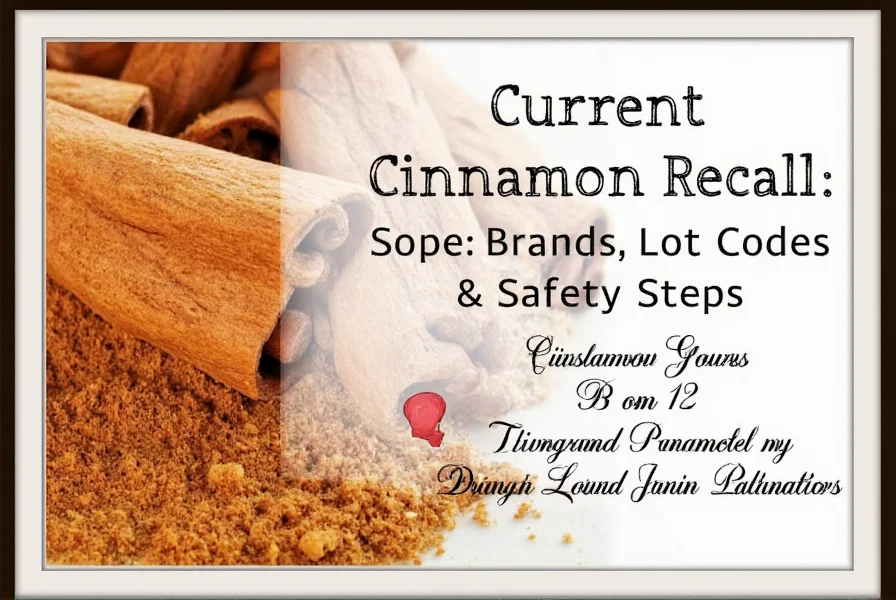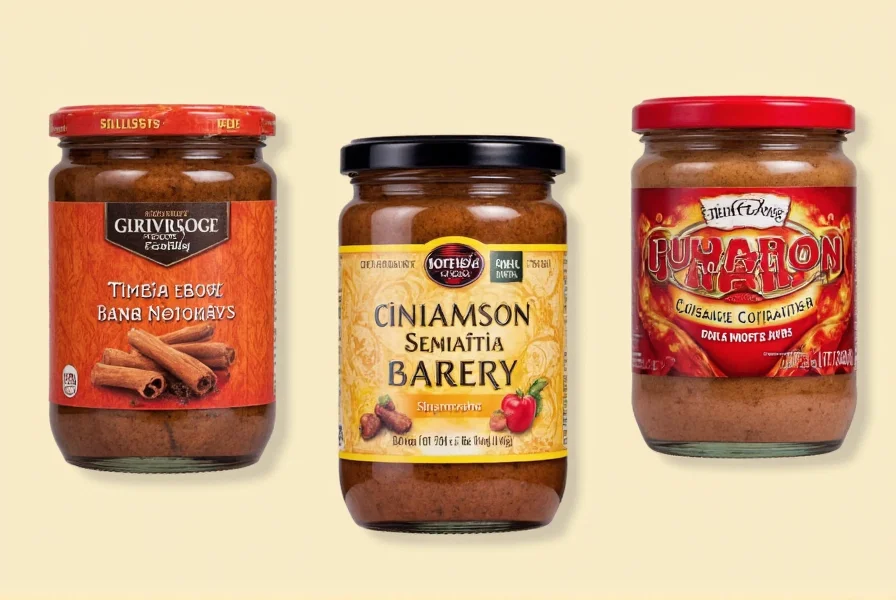As of October 2023, there is an active recall of certain cinnamon products due to potential salmonella contamination. The recall affects multiple brands including Badia, Durkee, and Spice Islands, with specific lot codes ranging from L2301 through L2315. Consumers should immediately check their pantries for affected products and discard them or return for a full refund. This recall was initiated after routine FDA testing detected salmonella in imported cinnamon batches from Sri Lanka.
When you search for cinnamon recall information, you need accurate, timely details that could impact your family's health. This comprehensive guide provides verified information about the current cinnamon recall situation, helping you protect your household with actionable steps.
Current Cinnamon Recall Details
The U.S. Food and Drug Administration (FDA) announced a voluntary recall of several cinnamon products on September 15, 2023. This spice recall 2023 involves multiple retail brands that sourced their cinnamon from the same supplier in Sri Lanka. The recall affects both ground cinnamon and cinnamon sticks sold in various package sizes from 1.5 ounces to 28 ounces.
| Brand Name | Affected Products | Lot Codes | Expiration Dates |
|---|---|---|---|
| Badia | Ground Cinnamon, Cinnamon Sticks | L2301-L2315 | Best by 12/2024 |
| Durkee | Simply Spices Cinnamon | 230101-230115 | Best by 01/2025 |
| Spice Islands | Ground Cinnamon | SI230101-SI230115 | Best by 02/2025 |
| McCormick | Foodservice Cinnamon | Multiple codes | Various dates |
Why Was Cinnamon Recalled?
The cinnamon salmonella recall occurred after routine FDA inspections detected salmonella bacteria in imported cinnamon shipments. Salmonella is a harmful pathogen that can cause serious and sometimes fatal infections, particularly in young children, elderly persons, and those with weakened immune systems.
According to the FDA's investigation report, the contamination likely occurred during the drying process in Sri Lanka, where improper temperature control allowed bacterial growth. The affected cinnamon was distributed to retailers nationwide between March and August 2023.

Health Risks of Contaminated Cinnamon
Consuming recalled cinnamon products contaminated with salmonella can cause symptoms including:
- Diarrhea (sometimes bloody)
- Fever and chills
- Abdominal cramps
- Nausea and vomiting
- Headache
These symptoms typically appear 6 hours to 6 days after exposure and can last 4-7 days. In severe cases, particularly among vulnerable populations, salmonella infection can lead to hospitalization. The FDA has confirmed 17 reported cases potentially linked to the contaminated cinnamon as of October 2023.
What Consumers Should Do
If you have cinnamon products at home, follow these steps to ensure your safety:
- Check your products against the lot codes listed in the recall notice
- Do not consume any affected products, even if they look and smell normal
- Properly dispose of recalled items by sealing them in a plastic bag before throwing away
- Contact the manufacturer for refund instructions (most companies are offering full refunds without proof of purchase)
- Clean storage areas where recalled products were kept using a mild bleach solution
For those who have consumed the recalled cinnamon and experience symptoms, contact your healthcare provider immediately. Keep any remaining product for potential testing if requested by health authorities.

Official Sources for Cinnamon Recall Information
When researching cinnamon recall updates, always verify information through official channels:
- FDA Recall Notice - The most current official information
- CDC Salmonella Information - Health guidance and statistics
- Brand-specific recall pages on manufacturer websites
- Your local health department website for regional information
Be cautious of social media posts or unofficial websites sharing cinnamon recall misinformation. Always cross-reference with government sources before taking action.
How to Stay Informed About Future Recalls
To protect yourself from future spice product recalls, consider these proactive measures:
- Sign up for FDA recall email alerts through the FDA subscription center
- Check product lot codes before purchasing spices
- Store grocery receipts for at least 30 days
- Follow reputable food safety organizations on social media
- Consider purchasing spices with clear country-of-origin labeling
Understanding Spice Safety Regulations
The current cinnamon recall situation highlights important aspects of spice safety. Unlike many other food products, spices often undergo minimal processing that doesn't eliminate pathogens. The FDA's Food Safety Modernization Act has strengthened requirements for spice importers, but contamination risks remain.
Reputable manufacturers typically implement additional safety measures including:
- Steam sterilization of spices
- Radiation treatment (where permitted)
- Multiple rounds of laboratory testing
- Traceability systems for quick recall implementation
When purchasing spices, look for brands that transparently share their safety protocols and testing procedures.











 浙公网安备
33010002000092号
浙公网安备
33010002000092号 浙B2-20120091-4
浙B2-20120091-4